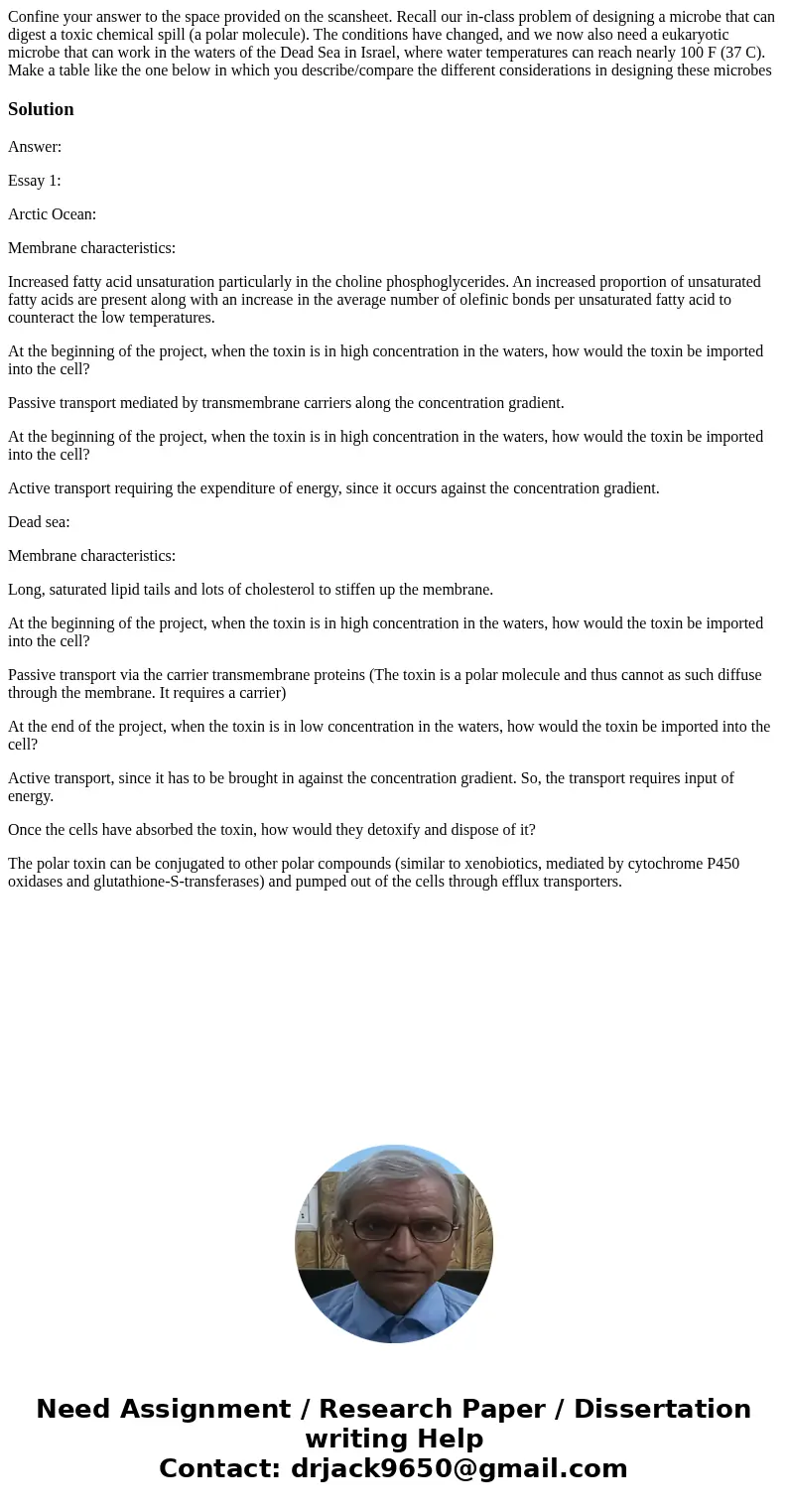Confine your answer to the space provided on the scansheet R
Solution
Answer:
Essay 1:
Arctic Ocean:
Membrane characteristics:
Increased fatty acid unsaturation particularly in the choline phosphoglycerides. An increased proportion of unsaturated fatty acids are present along with an increase in the average number of olefinic bonds per unsaturated fatty acid to counteract the low temperatures.
At the beginning of the project, when the toxin is in high concentration in the waters, how would the toxin be imported into the cell?
Passive transport mediated by transmembrane carriers along the concentration gradient.
At the beginning of the project, when the toxin is in high concentration in the waters, how would the toxin be imported into the cell?
Active transport requiring the expenditure of energy, since it occurs against the concentration gradient.
Dead sea:
Membrane characteristics:
Long, saturated lipid tails and lots of cholesterol to stiffen up the membrane.
At the beginning of the project, when the toxin is in high concentration in the waters, how would the toxin be imported into the cell?
Passive transport via the carrier transmembrane proteins (The toxin is a polar molecule and thus cannot as such diffuse through the membrane. It requires a carrier)
At the end of the project, when the toxin is in low concentration in the waters, how would the toxin be imported into the cell?
Active transport, since it has to be brought in against the concentration gradient. So, the transport requires input of energy.
Once the cells have absorbed the toxin, how would they detoxify and dispose of it?
The polar toxin can be conjugated to other polar compounds (similar to xenobiotics, mediated by cytochrome P450 oxidases and glutathione-S-transferases) and pumped out of the cells through efflux transporters.

 Homework Sourse
Homework Sourse